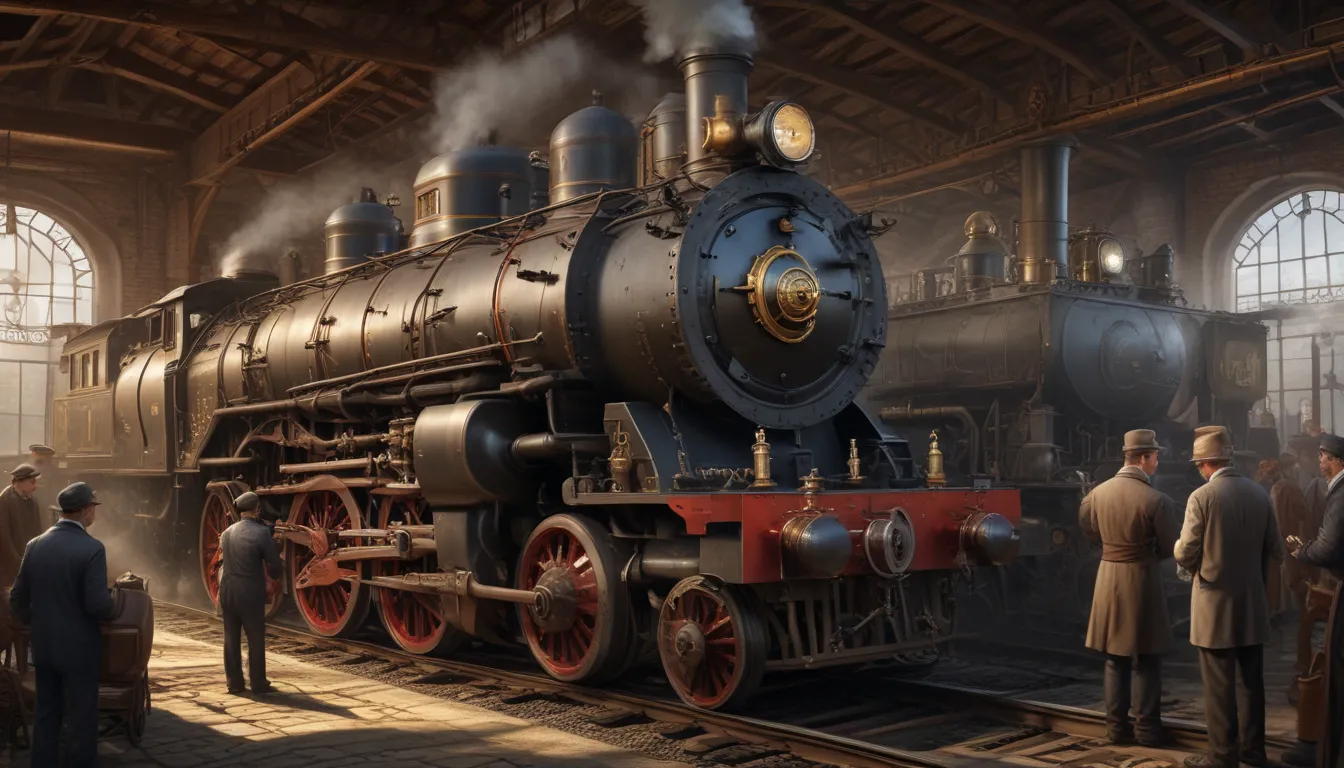A Note About Images: The images used in our articles are for illustration purposes only and may not exactly match the content. They are meant to engage readers, but the text should be relied upon for accurate information.
Have you ever marveled at the sheer power and ingenuity of steam engines, those magnificent machines that shaped the course of history? Prepare to be amazed as we delve into the captivating world of steam engines and uncover 34 fascinating facts that will fuel your curiosity and leave you in awe. From their humble beginnings to their pivotal role in the Industrial Revolution, steam engines have a story that is as captivating as it is influential. Join us as we embark on a journey through time and explore the wonders of steam power!
Unveiling the Secrets of Steam Engines
Steam engines are more than just machines – they are the driving force behind humanity’s progress and innovation. At its core, the technology behind steam engines involves harnessing the power of steam to perform mechanical work, whether it’s propelling ships across vast oceans or powering locomotives along iron tracks.
- Setting the Stage: The evolution of steam engines began with Thomas Newcomen’s groundbreaking invention in 1712, but it was James Watt’s improvements in the 1760s and 1770s that truly revolutionized the technology, paving the way for its widespread adoption. 2. Mechanics at Work: Steam engines operate by converting the heat energy from steam into mechanical work. This process involves boiling water to produce steam, which then expands and pushes against pistons or turbines, creating motion and driving machinery.
The Impact of Steam Engines on the Industrial Revolution
The Industrial Revolution owes much of its success and progress to the mighty power of steam engines, which transformed economies and societies on a global scale.
- Driving Progress: Steam engines were instrumental in fueling factories, enabling mass production, and reducing dependence on manual labor. 2. Revolutionizing Transportation: From steamships to locomotives, steam engines revolutionized travel, connecting distant lands and spurring trade and exploration. 3. Shaping Society: The widespread adoption of steam engines led to urbanization as people flocked to cities for factory jobs, shaping the modern world as we know it.
Exploring the Innovations and Variations of Steam Engines
Throughout history, various types of steam engines have been developed, each with its unique features and applications.
- High-Pressure Power: Richard Trevithick introduced the high-pressure steam engine in the early 19th century, revolutionizing locomotive technology and making steam-powered trains a reality. 2. Efficiency at Its Best: Compound engines, which reuse steam in multiple stages for increased efficiency, became commonplace in the 19th century for ships and stationary applications.
The Enduring Legacy of Steam Engines
While modern technologies have surpassed them in efficiency, steam engines continue to hold a special place in history and industry, captivating enthusiasts and educators alike.
- Preserving History: Many steam engines are lovingly preserved by enthusiasts and museums, showcasing the elegance and historical significance of this transformative technology. 2. Educational Tools: Steam engines are invaluable teaching tools, demonstrating principles of physics and engineering in a tangible and practical way. 3. Niche Applications: In certain industries, steam engines still find utility for specific processes where their unique characteristics are advantageous.
A Glimpse into the Surprising World of Steam Engines
Prepare to be amazed by some lesser-known facts and tidbits about steam engines that highlight their impact and enduring legacy.
- Ancient Origins: The very first steam engine, known as the Aeolipile, was created by Hero of Alexandria in the 1st century AD, serving as a precursor to modern steam technology. 2. Timeless Durability: Some steam locomotives have served for over a century, a testament to the durability and reliability of steam engine technology. 3. Environmental Consciousness: Modern steam engines can be environmentally friendly, running on biofuels and producing less pollution than traditional engines. 4. Speed Demons: The fastest steam locomotive, the Mallard, achieved a speed record of 126 mph (203 km/h) in 1938, a record that still stands today. 5. Versatile Powerhouses: From factories to ships and mines, steam engines have found a myriad of applications throughout history, showcasing their versatility and adaptability. 6. Cultural Icons: Steam engines have left a lasting imprint on popular culture, inspiring literature, movies, and video games with their themes of innovation and exploration. 7. Economic Drivers: The steam engine played a pivotal role in the rise of the British Empire, enabling it to dominate trade routes and establish colonies around the world. 8. Technological Pioneers: The development of steam engines spurred advancements in metallurgy and engineering, laying the foundation for the modern industrial era. 9. Global Influence: Steam engine technology quickly spread worldwide, influencing industries and transportation in countries far beyond its birthplace. 10. Enduring Legacy: The principles of thermodynamics and mechanical design pioneered by steam engines continue to shape modern engineering and technology.
Building a Brighter Future with Steam Engines
The legacy of steam engines serves as a testament to human creativity and innovation, reminding us of our relentless pursuit of progress and improvement. While they may no longer be at the forefront of technology, steam engines stand as a testament to an era when ingenuity and determination propelled humanity forward. So, the next time you encounter a steam engine, take a moment to appreciate not just its historical significance but the countless innovations and advancements it has inspired.
Conclusion
As we journey through the annals of history, the enduring legacy of steam engines shines brightly, illuminating the path to progress and innovation. From their humble beginnings to their pivotal role in shaping the modern world, steam engines stand as a testament to human ingenuity and resilience. So, let us continue to celebrate and cherish the marvels of steam power, as we honor the past while forging ahead into a future filled with endless possibilities and discoveries.
We hope you enjoyed this deep dive into the fascinating world of steam engines. If you have any questions or would like to share your own insights, we’d love to hear from you! Remember, the pursuit of knowledge is a journey we embark on together, fueled by curiosity and a thirst for discovery. Thank you for joining us on this enlightening adventure through history and technology. Happy steaming ahead!






